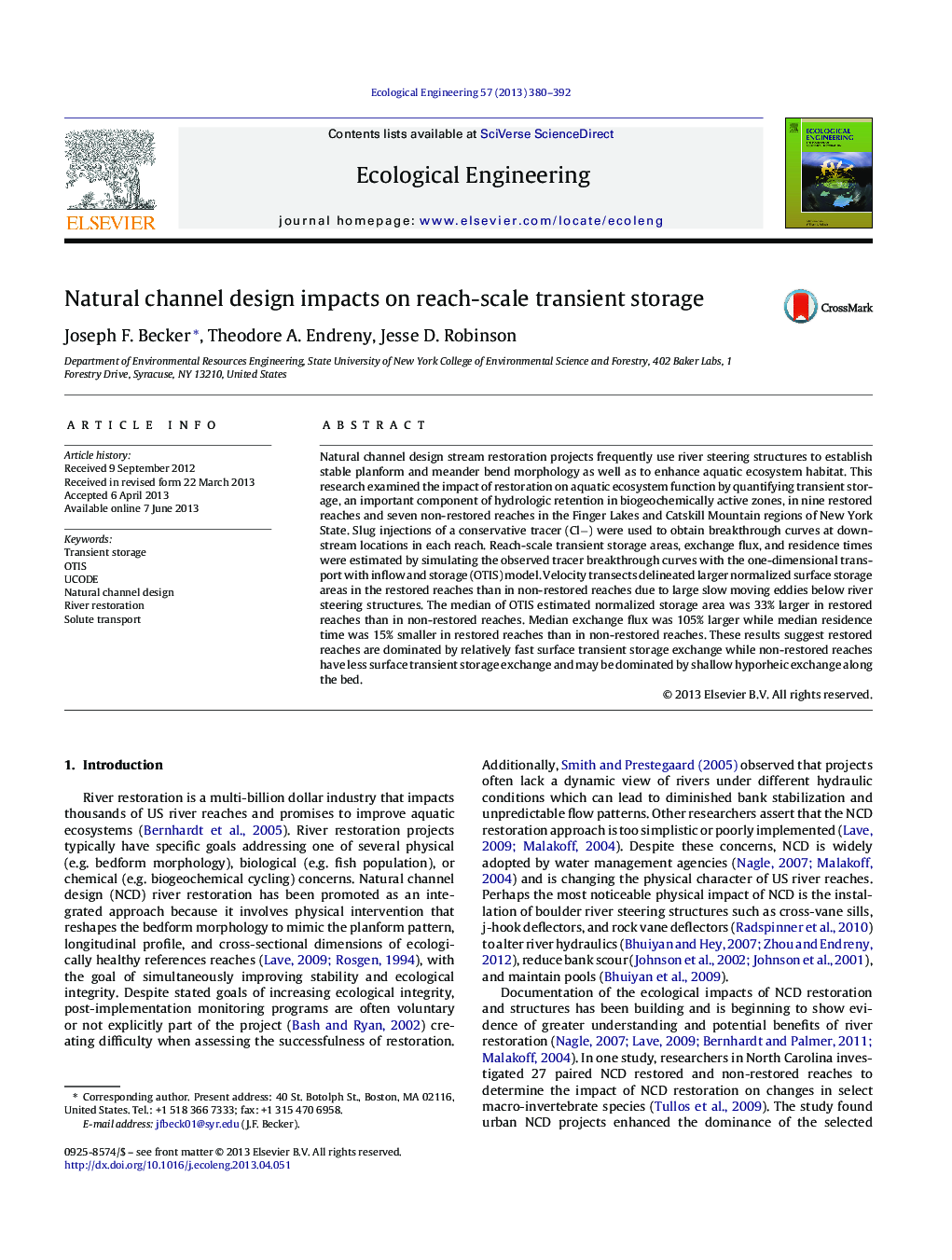| Article ID | Journal | Published Year | Pages | File Type |
|---|---|---|---|---|
| 6302644 | Ecological Engineering | 2013 | 13 Pages |
Abstract
Natural channel design stream restoration projects frequently use river steering structures to establish stable planform and meander bend morphology as well as to enhance aquatic ecosystem habitat. This research examined the impact of restoration on aquatic ecosystem function by quantifying transient storage, an important component of hydrologic retention in biogeochemically active zones, in nine restored reaches and seven non-restored reaches in the Finger Lakes and Catskill Mountain regions of New York State. Slug injections of a conservative tracer (Clâ) were used to obtain breakthrough curves at downstream locations in each reach. Reach-scale transient storage areas, exchange flux, and residence times were estimated by simulating the observed tracer breakthrough curves with the one-dimensional transport with inflow and storage (OTIS) model. Velocity transects delineated larger normalized surface storage areas in the restored reaches than in non-restored reaches due to large slow moving eddies below river steering structures. The median of OTIS estimated normalized storage area was 33% larger in restored reaches than in non-restored reaches. Median exchange flux was 105% larger while median residence time was 15% smaller in restored reaches than in non-restored reaches. These results suggest restored reaches are dominated by relatively fast surface transient storage exchange while non-restored reaches have less surface transient storage exchange and may be dominated by shallow hyporheic exchange along the bed.
Related Topics
Life Sciences
Agricultural and Biological Sciences
Ecology, Evolution, Behavior and Systematics
Authors
Joseph F. Becker, Theodore A. Endreny, Jesse D. Robinson,
